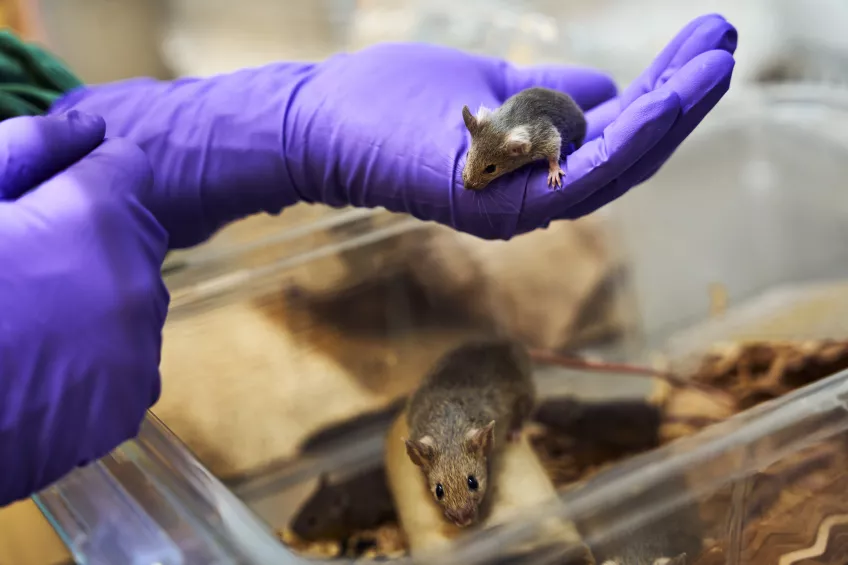Animal experiments
Animal experiments are used for scientific purposes, primarily in medical and natural science research. The goal is to develop new drugs, new treatment methods, or to increase our fundamental knowledge of how the body functions.
The majority of medical research at Lund University is conducted in test tubes or using cell culture techniques. Animal experiments are avoided as much as possible. However, there are research studies where animal experiments provide insights that cannot be achieved otherwise. This knowledge can lead to better diagnosis and treatment of many diseases, such as cancer, diabetes, Parkinson's, stroke, and lung diseases.
All experiments undergo ethical scrutiny
Animal experiments are strictly regulated and adhere to Swedish laws and EU laws on animal welfare. Animal experiments can only be used when no alternative methods are available. To conduct animal experiments in Sweden, one must first apply for permission from a regional animal ethics committee, which conducts an ethical review of the specific research study. The research is carried out according to a protocol reviewed and approved by the regional animal ethics committee in Malmö/Lund. The chairman and vice chairman are lawyers. Half of the twelve other members are researchers, laboratory animal technicians, or experimental animal personnel, while the other half consists of laypersons, some from animal welfare organizations.
Strict control of animals
The responsible authority for regulations and issues related to animal experiments is the Swedish Board of Agriculture. Compliance with existing regulations is monitored through regular inspections by the County Administrative Board and by three individuals appointed and approved by the Swedish Board of Agriculture at Lund University, responsible for the following areas: animal welfare and care, information, and staff training and competence. All animals used in scientific experiments at the Faculty of Medicine at Lund University are either bred for this purpose or come from an approved supplier. Experiments on wild-caught or "found" animals do not occur.
The design of the animals' environment is carefully regulated regarding space, food, hygiene, and includes providing stimulation. They are checked daily, and if there is any uncertainty about their well-being, they are assessed by one of the faculty's veterinarians. Mice and rats are the most commonly used species in medical research at Lund University. Other animals, such as zebrafish, rabbits, pigs, ferrets, and frogs, are used to a limited extent.
All personnel are trained
All individuals performing animal experiments at Lund University – researchers, students, and animal care staff – must, by law, have undergone training in laboratory animal science. The training includes relevant legislation, ethics, animal husbandry, experiment design, alternative methods, as well as practical and theoretical knowledge about the specific procedures involved in the intended experiment.
Can the results be applied?
It is sometimes claimed that results from animal experiments cannot be applied to humans because animals and humans would react differently to, for example, medications. In principle, almost all drugs are tested on animals to some extent during their development phases. Many of today's medical treatments and diagnostic methods would not exist without research conducted using animal experiments.
Alternative methods
It is desirable for all to minimize both the number of animals and individual animal suffering. Animal experiments are also expensive, time-consuming, and complicated to conduct. If the purpose of the study can be achieved with another alternative method, the law prescribes that this method should be used. This could, for example, involve cell cultures or samples from humans. The concept of 3R - Replace, Reduce, and Refine - is central:
Replace - Substitute with animal-free experimental methods whenever possible.
Reduce - Design experiments to use as few animals as possible.
Refine - Improve methods to minimize pain and other impacts on animals.
Swedish 3R efforts are driven and coordinated through the Swedish 3R Center, but Lund University also has a local coordination function where our 3R coordinator works closely with veterinarians to locally conduct and assist researchers with 3R work.
Researchers are constantly working to develop new methods that can replace animal experiments. For example, researchers at Lund University receive grants from the Swedish Research Council to do research on "alternative methods to animal experiments".
